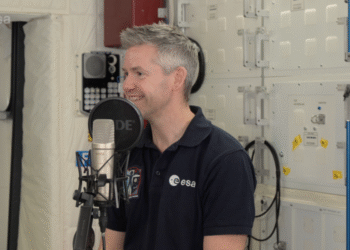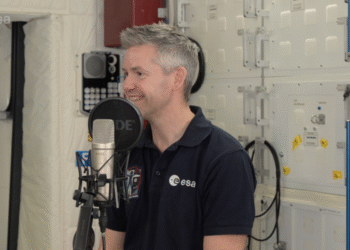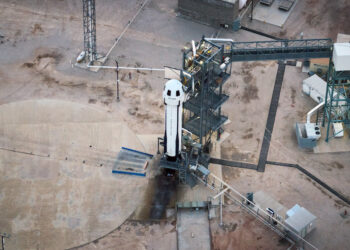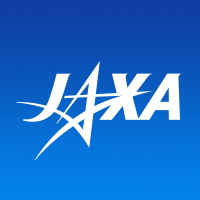NASA has delivered the Orion stage adapter for the Artemis II mission to Kennedy Space Center, marking a key step toward final stacking and CubeSat integration for the first crewed flight of the Artemis program. The hardware arrived Aug. 19 from Marshall Space Flight Center in Alabama and was transferred to Kennedy’s Multi-Payload Processing Facility, where technicians completed routine inspections on Aug. 20.
What the hardware does
Built and tested at Marshall, the Orion stage adapter mechanically connects the Space Launch System’s interim cryogenic propulsion stage (ICPS) to the Orion spacecraft. A built-in diaphragm shields Orion from flammable gases generated during ascent. The adapter also serves as a deployment platform for secondary payloads.
- Dimensions: approximately 5 feet (1.5 meters) tall and 18 feet (5.4 meters) in diameter
- Function: structural interface between ICPS and Orion; gas isolation via diaphragm
- Secondary payloads: supports and deploys CubeSats for science and technology demonstrations
CubeSat integration and deployment
The adapter will undergo CubeSat integration in the Multi-Payload Processing Facility before moving to the Vehicle Assembly Building for stacking on the SLS rocket. Artemis II plans to deploy four partner-provided CubeSats into Earth orbit after separation, while Orion continues its trajectory toward the Moon.
Mission context
Artemis II is planned as a lunar flyby that will carry a four-person crew—Reid Wiseman, Victor Glover, Christina Koch, and Jeremy Hansen—around the Moon and return to Earth. The mission is intended to validate deep-space crewed operations ahead of future lunar surface expeditions and to inform planning for eventual human missions to Mars.
Source: NASA: Orion Stage Adapter Arrives at Kennedy for Artemis II Stacking and CubeSat Integration






















